Abstract 9/2023
Table of content
Karol Gocyła, Aleksander Sobota, Renata Żochowska – Public transport shelter – definition, legal conditions, and classification
Andrzej Krych – Transformation and the institutional environment in pursuit of sustainable mobility
Arkadiusz Drabicki – Modelling the impact of real-time crowding information in urban public transport networks
Elżbieta Nowak, Dominik Witkowski, Piotr Bartczak, Damian Dratwa – Operation of railroads in the Łódź agglomeration
Abstracts
Karol Gocyła, Aleksander Sobota, Renata Żochowska
Public transport shelter – definition, legal conditions, and classification
Abstract: The article deals with public transport shelters and related issues of their definition, legal conditions for their construction, differentiation of types and the author’s proposal for their classification. In the introduction, the necessity of introducing an increasing number of passenger amenities was pointed out, which are expected to contribute to changing the distribution of transport tasks towards increasing the share of trips made by public transport, which is implemented by, among other things, equipping public transport stops with shelters. In addition, it was pointed out that it is necessary to introduce standards for the construction and equipment of public transport shelters, which is currently being implemented by some of the largest urban areas in Poland. To be able to standardize solutions, it is necessary to start with the introduction of a commonly used definition of a public transport shelter. In this regard, the article points out the wide variety of proposals to date and the lack of a single, generally accepted and used term. Therefore, the author’s definition of public transport shelter relating to its basic purpose, equipment, design, nature of location and scope of use is proposed. In addition, a literature review of the definition of public transport shelter is presented. Next, the article presents the current legislation on the construction of shelters and points out the lack of their definition in the legal system in Poland. The construction of public transport is embedded in the provisions of the Construction Law, the Regulation of the Minister of Infrastructure on technical and construction requirements for public roads and, auxiliary, in terms of defining what public transport shelters are, in the judgment of the Provincial Administrative Court in Poznań, but no definition of a public transport shelter was found in any of these or other documents examined. The variety of shape, function, materials used or additional equipment of shelters was further pointed out, along with examples of solutions used. Crucial in their construction is first and foremost the function to be performed by the public transport shelter, which is usually determined by its location and the will and capabilities of the institution to which its construction belongs. Next, the author’s proposal for the classification of public transport shelters and their equipment is presented. The classification is aimed at indicating the minimum set of features that make it possible to determine the basic typology of shelters, as well as to determine the minimum standard of equipment that will meet most of the needs of passengers associated with public mass transit travel. At the end of the article, the necessity of creating definitions and standards, despite the variety of solutions, in the field of public transport shelters and the existence of a formal and research gap on this issue are pointed out.
Key words: urban transport, public transport, public transport (bus) shelter
Andrzej Krych
Transformation and the institutional environment in pursuit of sustainable mobility
Abstract: The fact that the effectiveness of the sustainable mobility policy is determined by its institutional environment is the main thesis of the article. Several ideas of institutionalists and authorities of the New Economic History and New Institutional Economics are quoted, which are important for understanding the role of institutions, their evolution, factors of change and structures important from the point of view of transport policies. There are debates around the principles of sustainable mobility in the engineering community. It is proposed that the mainstream discussion of the problem should be embedded in the norms of social and economic transformation necessary in the face of climate threats. It is an imperative of transformation. The normative nature of the imperative is related to the modal division of travel. Its systemic approach is illustrated with a graph of the interaction of five factors stimulating the structure of demand and supply. This allows us to draw attention to the sense of consolidating institutions around the problem of mobility. The economic and eco-technical approaches to the possibility of modal split quantification were compared. The practical importance of the eco-technical energy intensity index and its closer relationship with the imperative of transformation were pointed out. Combining energy consumption with shared mobility is important for ongoing monitoring of strategy effects and project results in the transformation process. Based on the diagnosis of authorities, own experience (case study), as well as criticism of public intervention with the use of EU funds, the relationship between successes and failures of interventions and institutional conditions was analyzed. The summary (generalization) presents recommendations for the evolution of rules, policies and structures of government and local government institutions as well as institutions managing the distribution of European Union funds.
Key words: new mobility, institutionalism, transport policy, transport projects
Arkadiusz Drabicki
Modelling the impact of real-time crowding information in urban public transport networks
Abstract: Passenger congestion is a significant and recurring problem in urban public transport systems. Meanwhile, novel solutions such as real-time crowding information (RTCI) may offer an increasing potential of mitigating its negative effects. RTCI availability would allow passengers to make more informed choices and avoid overcrowding in public transport vehicles. However, the state-of-the-art research does not allow for a full understanding of the prospective ramifications and effectiveness of RTCI systems. This article focuses on analysing the impacts of RTCI on passengers’ decision-making process and resultant urban public transport system performance. In the first part, simulations on a real-world public transport network model (Krakow) illustrate the possible consequences of ubiquitous access to the RTCI. In the second part, SP surveys and discrete choice models reveal how the RTCI can induce new and potentially significant travel behaviour phenomena. The final part of this study investigates the potential applicability of RTCI systems as travel demand management tool, aimed at improving the travel experience and system performance, on the real-world model of a busy bus corridor (Warsaw). Findings from this study reveal that RTCI systems can positively influence the quality of travel experience in urban public transport and mitigate the passenger overcrowding risks. However, certain challenges have also to be addressed in practical implementation of RTCI solutions – particularly ensuring a high degree of RTCI accuracy and reliability for prospective users.
Key words: public transport, passenger overcrowding, intelligent transport systems, ITS, real-time information, RTCI
Elżbieta Nowak, Dominik Witkowski, Piotr Bartczak, Damian Dratwa
Operation of railroads in the Łódź agglomeration
Abstract: The development in 2010 of the Łódź Agglomeration Railway Ltd. (hereafter: ŁKA) coincided with a progressive decline in the number of passengers carried by rail, the degradation of infrastructure and, consequently, the marginalization of railroads in the Łódź voivodeship. The launch of transport operations by the ŁKA in 2010, the modernization and repairs carried out on the railroad network of the Łódź voivodeship, as well as the commissioning of new stations/stops, helped reverse the above-mentioned unfavorable trends. Thanks to the aforementioned changes, the number of passengers (both in the entire voivodeship and its capital) began to gradually increase, year after year. The key event, accelerating the growth in the number of travelers, was the introduction in April 2017 of the ticket validated by the City of Łódź and the ŁKA, which in subsequent years was accepted by local governments neighboring Łódź. The ŁKA’s transportation activities and accompanying initiatives receive high ratings given by passengers in the carrier’s periodic passenger surveys. In order to further improve the quality of services, the ŁKA continues to engage in projects aimed at developing multimodal public transport in the Łódź agglomeration.
Key words: rail transportation, agglomeration rail, public transport

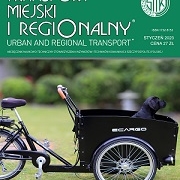 SITK
SITK 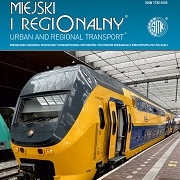 SITK RP
SITK RP 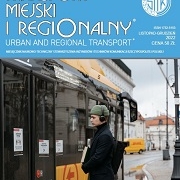 SITK
SITK 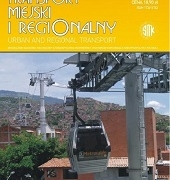 SITK RP
SITK RP 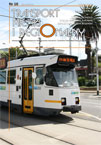 SITK RP
SITK RP 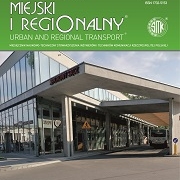 SITK
SITK 
 SITK
SITK SITK
SITK